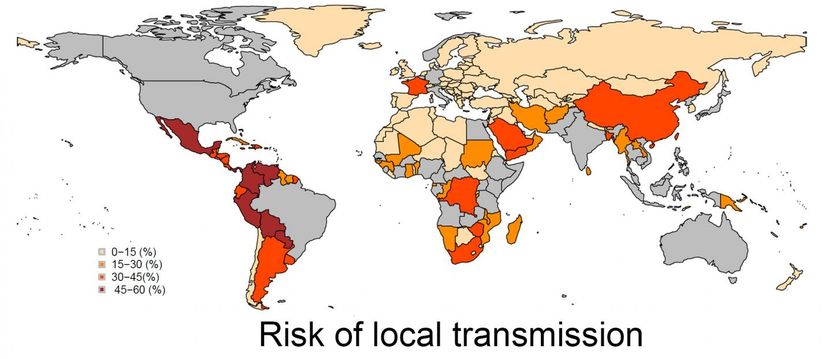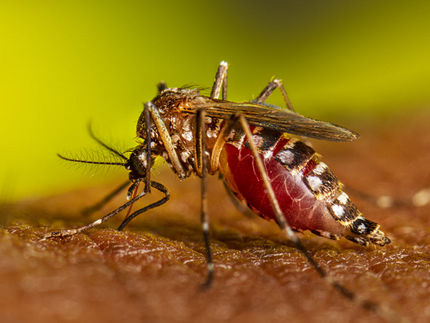Predicting the spread of the Zika virus
A new tool predicts the risk of Zika virus importation and local transmission for 189 countries
A new tool by Japan-based researchers predicts the risk of Zika virus importation and local transmission for 189 countries.

The risk is given as the percentage of observing local transmission by the end of 2016, colored by intensity (0-15, 15-30, 30-45 and 45-60 percent, respectively). The origin country Brazil and countries that have already experienced case importation prior to importation event in Brazil are colored by grey.
Hiroshi Nishiura
Countries that are well connected to/from Brazil have been at particularly high risk of importation, according to the analysis by a team of researchers from the University of Tokyo, Hokkaido University, and the Japan Science and Technology Agency.
However, subtropical and tropical countries with a history of dengue and other mosquito-borne diseases have the greatest risk of the virus spreading once it arrives in the country. This means many nations in South and Central America, as well as the Caribbean, face the highest risk of infection and should take measures to prevent mosquito bites, according to the study. France, southern parts of China and the United Arab Emirates also fall into this category having experienced previous outbreaks.
"We have shown that the predicted risk of local transmission was frequently seen in tropical and subtropical countries with dengue or chikungunya epidemic experience, while the risk of importation was more scattered around the world," said Hiroshi Nishiura, a professor of hygiene at Hokkaido University.
The Zika virus was first found in Uganda in 1947, and then detected in 39 countries around the world, including the United States, India and Japan. In early 2015, a Zika virus outbreak in Brazil was soon followed by a high number of microcephaly cases, in which babies are born with abnormally small heads. The link between the two is not definitively understood, but is strongly suspected. Since the Brazil outbreak, Zika virus has been detected in an additional 39 countries, including in Europe, the U.K., South America and Asia.
Many researchers are working to anticipate the virus's potential spread, especially given that it can be carried by lightly infected travelers and then passed onto others by mosquitos. Global concern and attention are elevated with thousands of visitors set to attend the Olympics in Rio de Janeiro this summer.
Professor Nishiura and his colleagues predicted the virus' potential of importation and local transmission by the end of 2016 using a survival analysis model, information about airline transportation networks, and transmission data for dengue and chikungunya viruses, which are also transmitted by the same mosquito species. They collected Zika data up to January 31, 2016, and they note that new cases were confirmed in more countries shortly thereafter.
The authors recommend that a finer scale analysis be done to more accurately predict the spread within regions. For example, models should incorporate ecological information about mosquitoes.
"Despite a clear need to improve predictions in the future, the present study successfully devised a simple global risk prediction of importation and local transmission," Prof. Nishiura said. "Countries at low risk may focus on prevention among pregnant women who must travel to epidemic areas."





















































